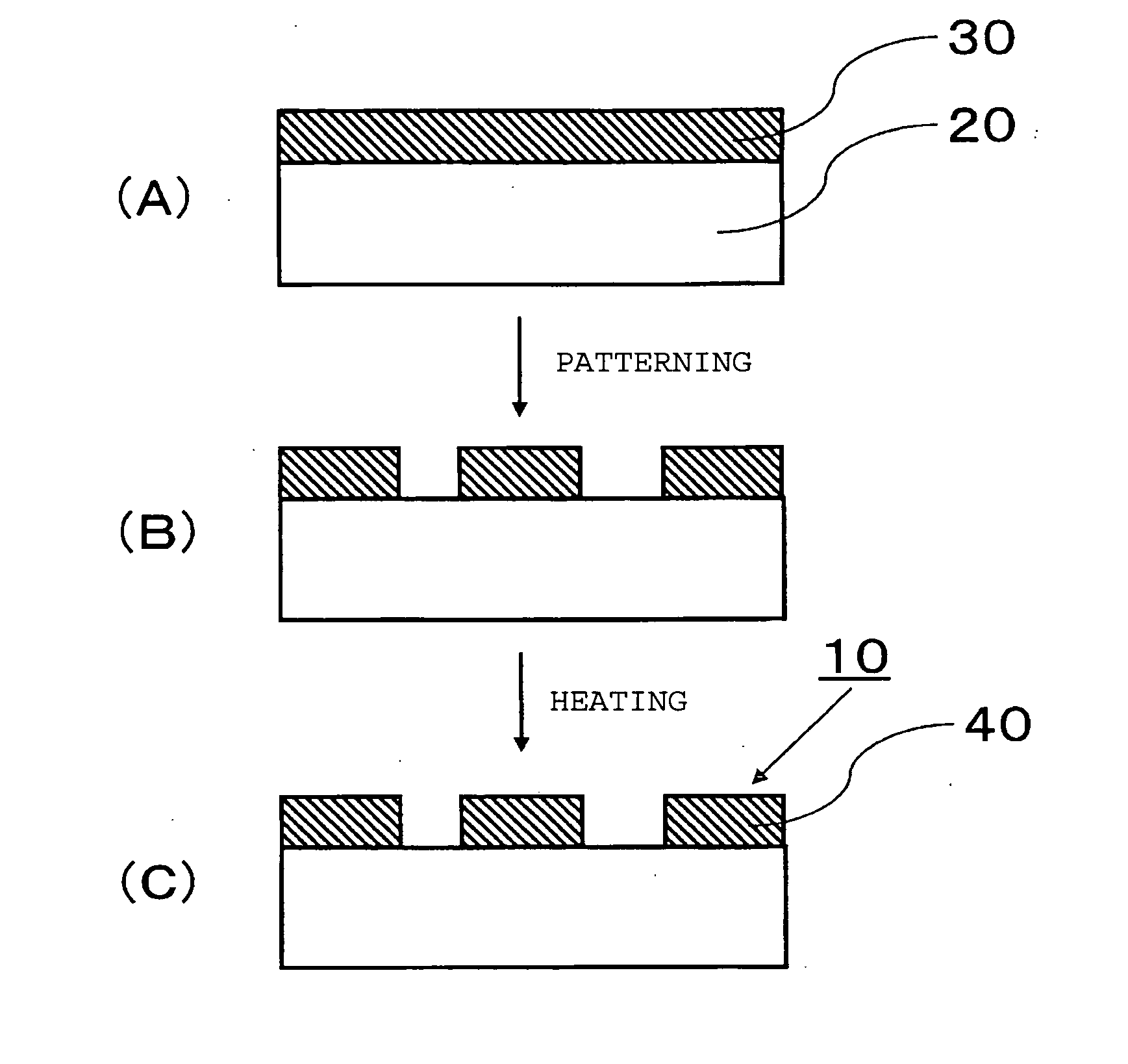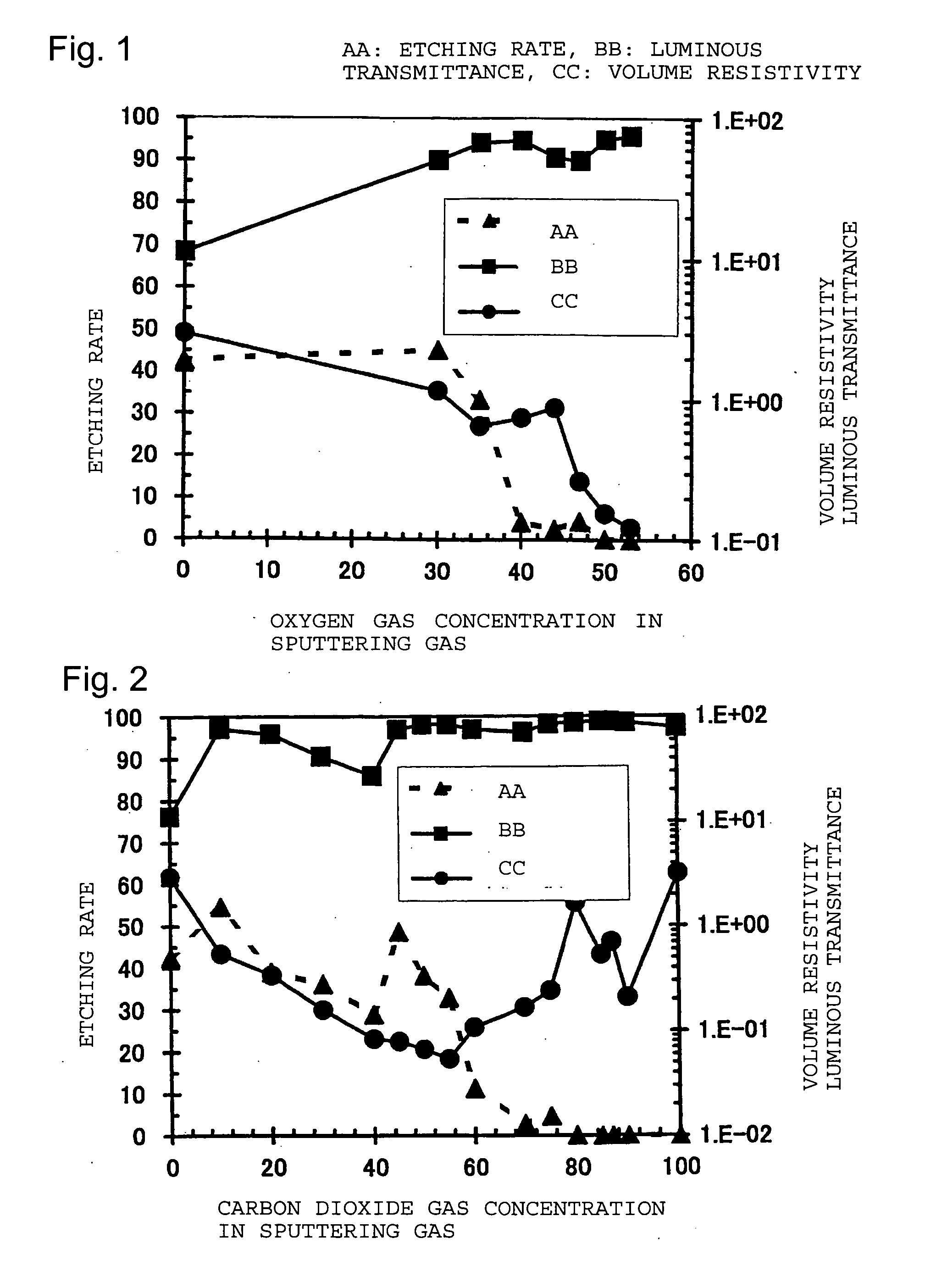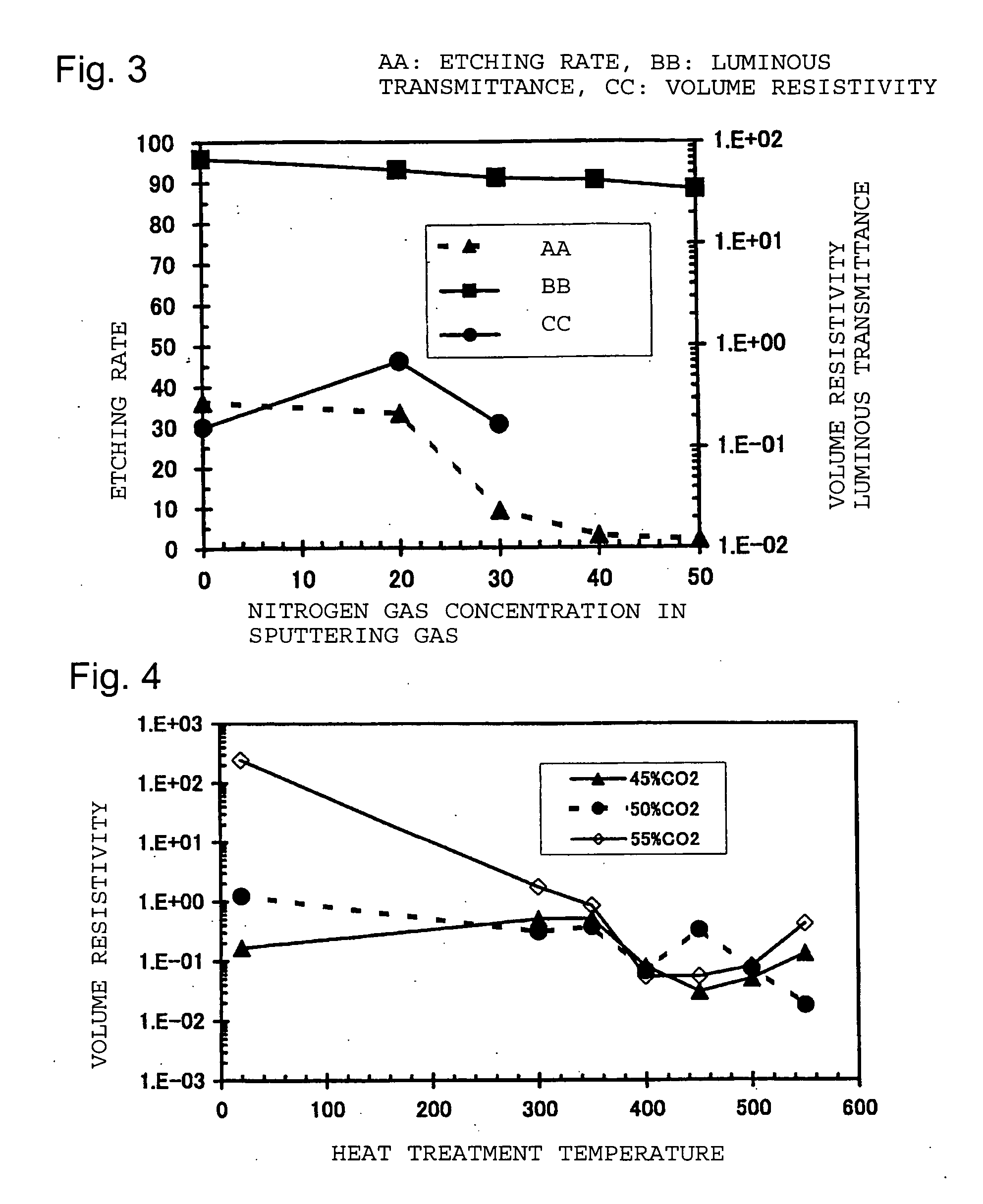Process for producing transparent electrode
a technology of transparent electrodes and electrode layers, which is applied in the direction of instruments, non-metal conductors, conductive layers on insulating supports, etc., can solve the problems of inability to easily etch, inconvenient lift-off process, and scarce indium resources, and achieve excellent transparency and electrical conductivity. , the effect of low cos
- Summary
- Abstract
- Description
- Claims
- Application Information
AI Technical Summary
Benefits of technology
Problems solved by technology
Method used
Image
Examples
example 1
[0079] A high strain point glass (PD200, manufactured by Asahi Glass Company, Limited) having a thickness of 2.8 mm was prepared as a substrate. The glass substrate was washed and set in a substrate holder. A SnO2 oxide sintered target (manufactured by MITSUI MINING & SMELTING CO., LTD.) having 3 atomic % of Sb added to Sn was attached to the cathode of a DC magnetron sputtering apparatus. The deposition chamber of the sputtering apparatus was evacuated of air, and a film containing tin oxide as the main component having a thickness of about 150 nm was formed on the glass substrate by a DC magnetron sputtering method. As the sputtering gas, an argon gas was used. The substrate temperature was 80° C. The pressure was 1.2 Pa at the time of deposition. The obtained film was a film colored yellow, whereby presence of oxygen deficiencies in the film was estimated. The visible light transmittance of the glass substrate provided with the obtained film was 81%. The density of the formed fil...
example 2
[0087] A high strain point glass (PD200, manufactured by Asahi Glass Company, Limited) having a thickness of 2.8 mm was prepared as a substrate. The glass substrate was washed and set in a substrate holder. A SnO2 oxide sintered target having 10 atomic % of Sb added to Sn (a 6 inch circular SnO2 target (manufactured by MITSUI MINING & SMELTING CO., LTD.) formed by mixing Sb2O3 and SnO2 powders in a molar ratio of 10:90 and sintering the mixture) was attached to the cathode of a DC magnetron sputtering apparatus. The deposition chamber of the sputtering apparatus was evacuated of air, and a film containing tin oxide as the main component having a thickness of about 150 nm was formed on the glass substrate by a DC magnetron sputtering method. As the sputtering gas, an argon gas was used. Deposition was carried out at room temperature without heating the substrate, and the temperature was 70° C. The pressure was 3.3 Pa at the time of deposition. The visible light transmittance of the g...
example 3
[0091] A high strain point glass (PD200, manufactured by Asahi Glass Company, Limited) having a thickness of 2.8 mm was prepared as a substrate. The glass substrate was washed and set in a substrate holder. A SnO2 oxide sintered target having 10 atomic % of Sb added to Sn (a 6 inch circular SnO2 target (manufactured by MITSUI MINING & SMELTING CO., LTD.) formed by mixing Sb2O3 and SnO2 powders in a molar ratio of 10:90 and sintering the mixture) was attached to the cathode of a DC magnetron sputtering apparatus. The deposition chamber of the sputtering apparatus was evacuated of air, and a film containing tin oxide as the main component having a thickness of about 150 nm was formed on the glass substrate by a DC magnetron sputtering method. As a sputtering gas, an argon gas was used. Deposition was carried out at room temperature without heating the substrate, and the temperature was 70° C. The electric power was 1,000 W. The gas pressure was changed within a range of from 1 to 4 Pa...
PUM
| Property | Measurement | Unit |
|---|---|---|
| Temperature | aaaaa | aaaaa |
| Temperature | aaaaa | aaaaa |
| Fraction | aaaaa | aaaaa |
Abstract
Description
Claims
Application Information
 Login to View More
Login to View More - R&D
- Intellectual Property
- Life Sciences
- Materials
- Tech Scout
- Unparalleled Data Quality
- Higher Quality Content
- 60% Fewer Hallucinations
Browse by: Latest US Patents, China's latest patents, Technical Efficacy Thesaurus, Application Domain, Technology Topic, Popular Technical Reports.
© 2025 PatSnap. All rights reserved.Legal|Privacy policy|Modern Slavery Act Transparency Statement|Sitemap|About US| Contact US: help@patsnap.com



